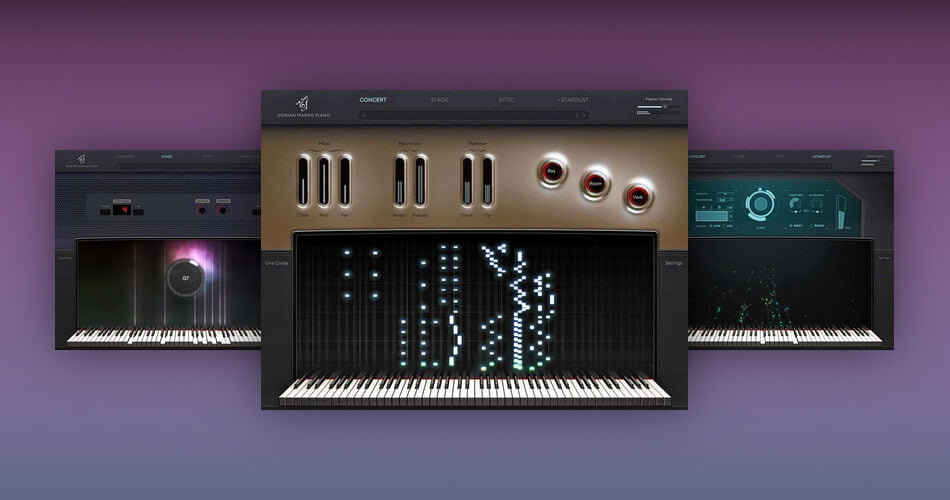Auddict has released its latest flagship virtual instrument, recorded and brought to life by professional pianist Dorian Marko on his own very special golden-era Steinway D concert grand piano.
In addition to being recorded and produced by a virtuoso pianist, the instrument was also voiced, tuned and prepared by world-renowned piano technician Iain Gordon, who has prepared pianos for the world’s leading pianists including Lang Lang, Martha Argerich, Chic Corea, Evgeny Kissin and more.
Dorian Marko Piano features four different piano models, each with a different sound, set of controls and beautiful performance-responsive visualization to suit different genres/styles of music. As a result, it can work in a classical recording as well as it can sit in a pop/rock mix.
- Concert Mode: The most natural, grand sound and most faithful out of the four models to the original instrument. Accurate and realistic sympathetic resonance occurs when the sustain pedal is held, and the user can control the level of mechanical sounds in and around the piano. These include hammer up, hammer down, room noise and pedal noise. The sympathetic resonance can even be turned up or reduced to zero.
- Stage Mode: Drier and closer with controls that can tighten/stiffen the sound as well as enhancing the attack and manipulating the stereo width. The visualization in this model is a cloudy smoky display based around the circle of fifths and shows the chord names as the user plays them.
- Attic Mode: Rounded, warm, and deep. This sound is very suitable for cinematic music, or anything else that requires a soft and extremely lush felt-piano-esque sound. Controls allow the user to soften the sound, add a vintage touch with a speaker-simulator, add a beautiful echo/reverb and more.
- Stardust Mode: Stardust mode is an additional layer which can be applied to any of the above modes (totalling six potential modes for the Dorian Marko Piano) using a chromatic sample set in combination with granular synthesis to enhance the sound of the other three models, or even warp them until they are so unrecognizable that they no longer even sound like pianos.
The Dorian Marko Piano features three mic positions to mix with; close mid and far, separately recorded normal and una corda samples, and fourteen dynamic layers (slightly tapered at the top end) for the normal samples and seven for the una corda mode, as well as adjustable release samples.
The instrument features realistic sympathetic resonance when the sustain pedal is held down which can even be turned up or reduced to zero. In combination with the mechanical sound controls (hammer ups, hammer downs, pedal noises, room noise, mic positions), the user is granted full control over every component that makes up the sound of the concert piano.
Available in VST/VST3, AU and AAX plugin formats and as standalone software for Windows and Mac. The virtual instrument is on sale for the introduction price of $99 USD for a limited time (regular $199 USD).
Dorian Marko Piano is fully M1 compatible and Auddict’s other two flagship/standalone virtual instruments PercX and Hexeract have also been updated to run on the M1 chip.
More information: Auddict



